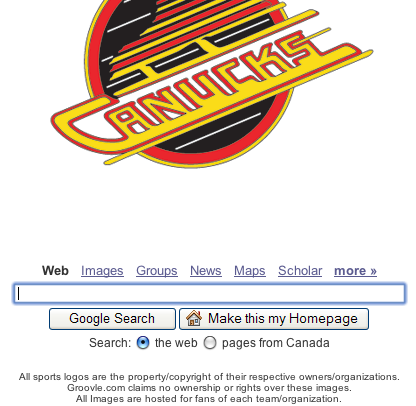In any early stage company, availabiliy of cash to fund operations & growth is an area of prime concern. So in this article I will talk about the timelines around securing angel financing. I will outline a hypothetical week by week timeline as a company progresses through the funding process. Obviously every situation will be unique so take this all in context.
In this example, let’s assume that your company is undertaking its first round of raising funding from an outside source (i.e. not friends or family). I will also assume that your company is operating, meaning it has an initial management team, defined its business plan, and has started work on its product or service. The company does not necessarily have to be generating revenue or have launched a product however the founders have at least drawn up a plan for where they want to take the company and are working towards it. The company is seeking funding via an organized angel group and is targeteting to raise $250,000 from 5 to 10 investors.
Week 1 – You research and select an angel group, get the two page company application form, spend the week writing a compelling request for funding all neatly summarized in two pages.
Week 2 – You submit the form, call the angel group director to ensure the form was received, ask about what happens next and answer any questions the director has on your company.
Week 3 – The angel group selection committee meets to review all applications received in order to select the 2 or 3 that will present at the group’s next meeting. Good news, you get a call later on in the week informing that your company is selected and will be invited to present at the next meeting in 2 weeks.
Week 4 – You get together with the management team to work on the presentation. Develop the slides, rehearse, rehearse, rehearse.
Week 5 – You dry-run the presentation with as many people as you can, get loads of suggestions, make revisions, rehease, rehease, rehearse.
Week 6 – You give the pitch to a crowd of 30 people, 15 minutes for the presentation and 15 minutes of questions. Things go well and 14 people express interest in having a more detailed meeting with your company. A date is set for the following week when everybody’s schedules work.
Week 7 – Spend the week preparing for the angel due dilligence meeting.
Week 8 – Have a 3 hour meeting with the angels. 10 people end up attending. Review the business in more detail, answer questions, discuss ideas on how to take the business forward. Angels ask you to work on some follow up information and say they will discuss things amongst themselves next week.
Week 9 – You prepare and send angels the additional information they wanted. Angels privately meet to discuss and determine what needs to be researched more.
Week 10 – Angels continue their due dilligence, you answer any questions they have and supply them whatever information they require.
Week 11 – Angels meet and determine there is interest to proceed and begin work on a term sheet.
Week 12 – Term sheet is given to the company. You review with the management team, discuss with your lawyer. Some terms not acceptable so you work on a revision and send it to your lawyer.
Week 13 – Your laywer reviews the revision and suggests some changes. You have a conference call with the laywer & management team to finalize. Your counter-proposal is sent to the angels.
Week 14 – Angels review, have conference call to discuss, give to their lawyer to review. Changes required so they work on a new revision.
Week 15 – New revision is reviewed by the angel’s laywer, finalized, and then sent to the company. You review with your team & terms are acceptable. Good news, you have agreed on terms and angels have tentatively fielded $225,000 across 8 investors.
Week 16 – You start to work with your lawyer to draft up a new shareholders agreement and other closing documents. Angels continue with due dilligence.
Week 17 – Your lawyer provides you a set of documents. You review and don’t like the wording of certain points. You and the management team have a conference call with the lawyer to discuss.
Week 18 – Your lawyer provides a new revision, you review and are comfortable. Documents are sent to the angels.
Week 19 – Angels review and send to their laywer. Lawyer reviews & makes revisions. Angels have conference call with lawyer to discuss.
Week 20 – Angel’s laywer finalizes revisions and they are sent to the company to review. You review, your lawyer reviews, everything is satisfactory. Angels final call for investment commitment results in $200,000 across 6 investors.
Week 21 – Closing documents are prepared, pick a closing date, execute signatures on all documents, get cheques. Congratulations – you are funded!
So in this example, from start to finish the process took around 5 months. As I mentioned, this is just a hypothetical example and it obviously omits a lot of details. Your actual scenario may be longer or shorter. As a case in point, if you were to go through another couple of review cycles to finalize documents between your company & your laywer and the angels & their lawyer, you can easily see how this could add another month to the process. Remember that although this may be your top priority, the other parties involved may be working on other deals or cases and not have the time to give this the same level of focus and priority that you will.
The main take away is that when looking for funding – make sure you start early and plan for how long it will realistically take. You clearly do not want to be in a situation where you desparately need cash when you are working on deal terms as you may need to accept terms you are not comfortable with.
In my next series of articles, I will walk through the various areas that angels look for in evaluating a company and what should be part of the investment pitch. As always, if you have any questions, comments, or suggestions for future articles feel free to contact me: craig at mapleleafangels.com

 What happens when you’ve made a business out of publishing
What happens when you’ve made a business out of publishing 
 Sudbury, Ontario based
Sudbury, Ontario based 
